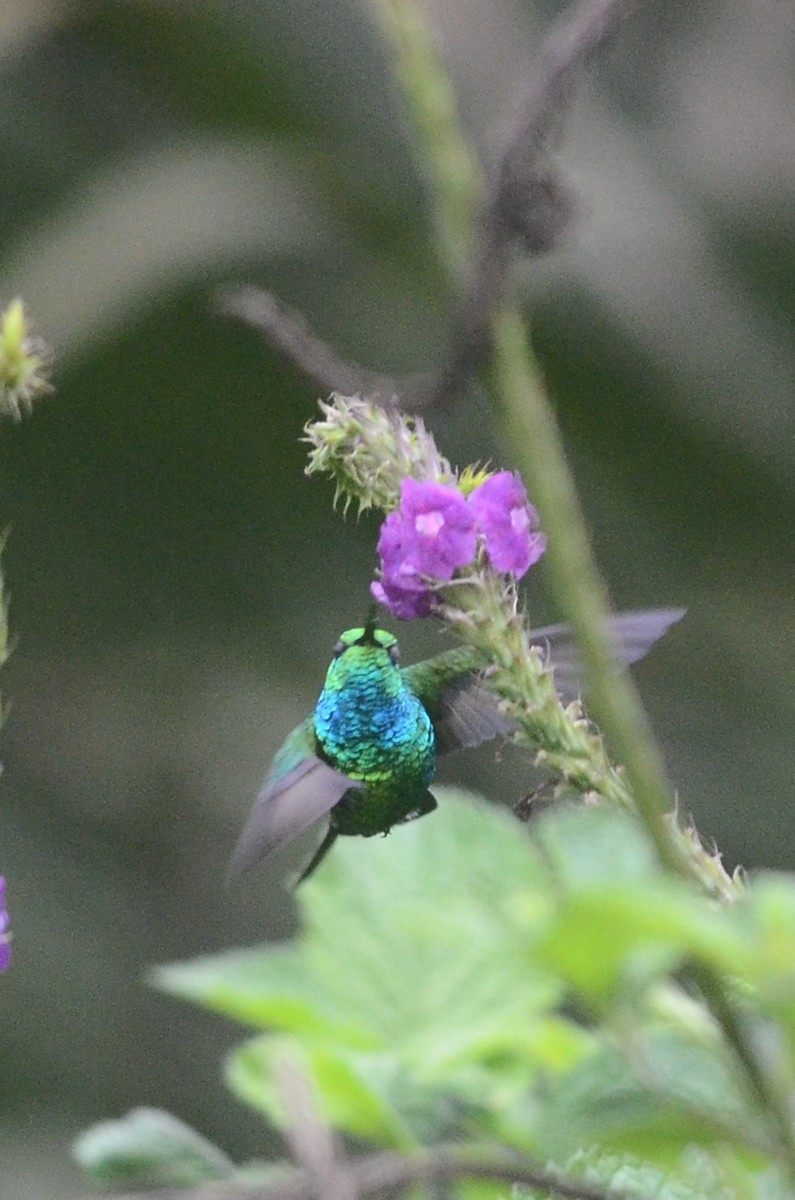Blue-tailed Emerald
A species of Typical emeralds Scientific name : Chlorostilbon mellisugus Genus : Typical emeralds
Blue-tailed Emerald, A species of Typical emeralds
Botanical name: Chlorostilbon mellisugus
Genus: Typical emeralds
Content
Description General Info
 Photo By Nikolaj Mølgaard Thomsen
Photo By Nikolaj Mølgaard Thomsen Description
The blue-tailed emerald is 7.5 cm (3 in) long and weighs 2.6 g. The black bill is relatively short and straight. The male has a brilliant green plumage, with white thighs and a dark metallic blue tail (clearly forked in the northern part of its range; slightly so in the central and southern part). The female average smaller than the male and also differ by the grey-white underparts, a blackish ear patch, a short white supercilium/post-ocular streak and white-tipped outer tail feathers. The song is a pleasant twittering, and the call of this species is a pebbly tsip. 
Size
9 cm
Nest Placement
Tree
Feeding Habits
Blue-tailed Emerald primarily consumes nectar, adopting a trap-lining foraging strategy. However, blue-tailed Emerald can also be found with other hummingbirds at flowering trees. In some regions, blue-tailed Emerald defends territories with abundant flowers to maintain a food supply.
Habitat
The blue-tailed Emerald predominantly inhabits tropical and temperate zones across broader South American regions. This species thrives in a variety of environments including savannas, cerrados, cultivated landscapes, plantations, urban gardens, fields, and hedgerows. The blue-tailed Emerald is also commonly found in clearings and peripheries of terra firme forests, as well as in deciduous woodlands. In certain areas, they are particularly abundant in várzea and floodplain forests that characterize some Amazonian ecosystems.
Dite type
Nectivorous
General Info
Feeding Habits
Bird food type
Behavior
The female lays her eggs in a small cup nest, similar to that of the ruby-topaz hummingbird, placed on a horizontal tree branch. Incubation is 13 days with a further 18 days to fledging. Blue-tailed emeralds feed on insects and nectar. 
Distribution Area
It is a bird of savanna, scrub, cultivation and similar semi-open woodland. In the Amazon, where generally uncommon and more localized than in the northern part of its range, it mainly occurs at forest edge and in várzea. 

 Photo By Nikolaj Mølgaard Thomsen
Photo By Nikolaj Mølgaard Thomsen Scientific Classification
Phylum
Chordates Class
Birds Order
Swifts and hummingbirds Family
Hummingbirds Genus
Typical emeralds Species
Blue-tailed Emerald